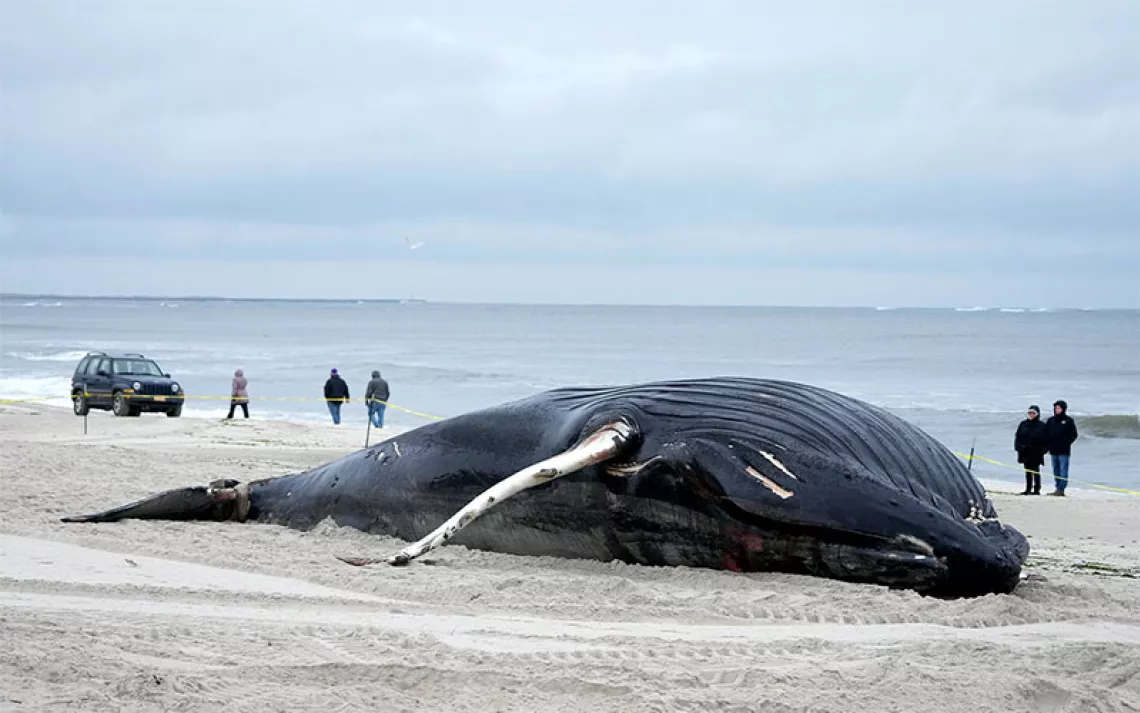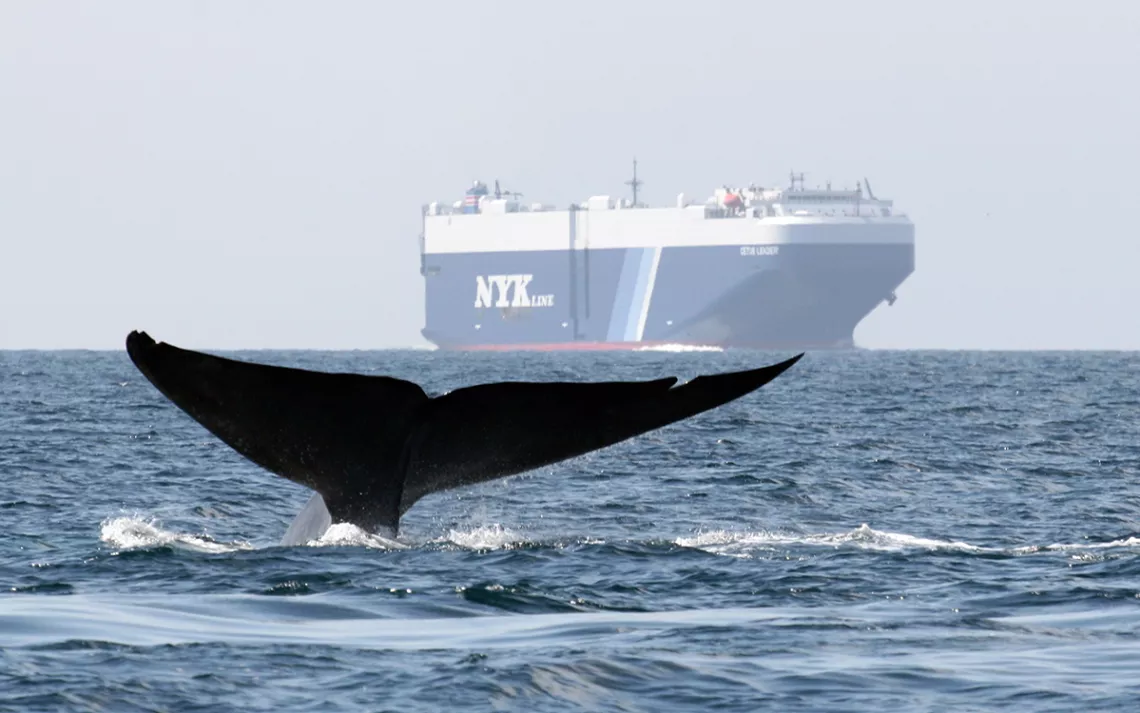A Whale of a Controversy
Animal rights groups and the Makah Nation tangle over traditional whaling
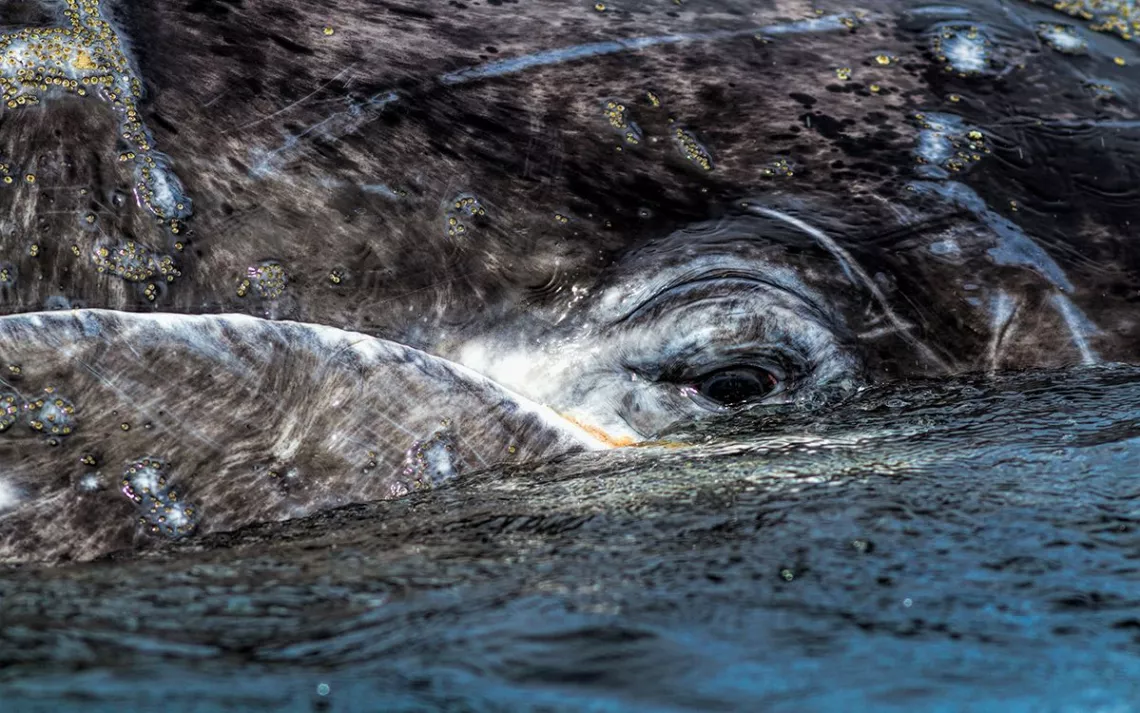
Photo by renacal1/iStock
Ten of us have our eyes trained on the water, scanning back and forth and back and forth, when someone points to a white spray in the distance. With one side shorter than the other, this blow is vaguely heart-shaped. Carrie Newell, marine biologist and owner of Whale Research EcoExcursions in Depoe Bay, Oregon, had explained earlier to our tour group that Comet is easy to spot thanks to this lopsided blow, caused by a partial blockage in his blowhole.
“That’s him!” she yells. “Come to us, Comet!”
His lumpy back slices the water in a straight line toward our boat; another blow and then he’s gone. There’s laughter and clapping, and much checking of the phone photos we whale watchers have frantically snapped—none of which capture the feeling of having just seen a gray whale.
This is the closest most of us have ever been to a whale. Newell, on the other hand, is out here on Depoe Bay multiple times a day from May through October, and these gray whales—members of the Pacific Coast Feeding Group, a unique group that stays in the Pacific Northwest throughout the summer rather than migrating southward—often swim right up to her boat.
“Did you see the heart shape?! Did you see that?”
Steering the boat into a position better suited to hopefully catching Comet when he resurfaces, Newell’s enthusiasm is contagious. But recently, so is her anger. Toward the end of 2019, Newell threw her energies into providing testimony aimed at preventing members of the Makah Tribe, who live about 460 miles north of here on the Olympic Peninsula’s Neah Bay, from resuming a 2,700-year tradition of hunting gray whales. The November 2019 administrative trial took place after NOAA granted a conditional waiver for the tribe to resume whaling in response to the Makah’s request, which they filed in 2005.
In exchange for ceding thousands of acres of land to the US government in 1855, the Makah secured the right to continue hunting whales under the Treaty of Neah Bay. That treaty established the Makah as the only US Native American nation with a whaling right clearly specified in its treaty—though the tribe voluntarily stopped hunting in the 1920s, when the gray whale population dwindled dangerously due to overzealous commercial whaling.
By the 1940s, only a few hundred eastern Pacific gray whales swam in the Pacific Northwest. They’ve since rebounded to a healthy population, numbering around 26,000 today. Which is why the Makah sought an exemption to the federal ban on whaling. The National Oceanic and Atmospheric Administration obliged in April 2019, stating that the Makah could hunt an average of four eastern North Pacific gray whales each year—not to exceed five in any one year, or 24 in any six-year period—for the next decade.
The Makah argue that this right is already guaranteed. However, after experiencing a vicious public backlash to a similar approved hunt back in 1999, they’re now participating in a drawn-out legal battle before exercising that right again.
“I totally understand how [Carrie Newell] loves these magnificent creatures,” says TJ Greene, Makah Tribal Council chairman. He acknowledges that Newell, and everyone who shares her views, obviously wants to protect the whales. But so do the Makah—a nation that has been well aware of this group of whales long since before they were identified as the PCFG. “From our standpoint, we want the same thing,” says Greene, who explains that whaling represents a whole constellation of practices present in nearly every aspect of Makah members' lives. “That’s why we reserved that treaty right. We understood the importance of the ocean. We understood migration patterns. When we are exercising our treaty right to hunt and harvest whales—that doesn’t happen without the protection of the resource and the habitat. It’s not separate.”
The opposition to the Makah’s whaling resumption is made up of scientists and attorneys from groups like Sea Shepherd and the Animal Welfare Institute that view whaling as inhumane and dangerous to the health of a fragile population, period. Newell was brought on as an expert witness in late 2019 to testify that in granting the Makah their whaling exception, the government had in fact failed to comply with the Marine Mammal Protection Act of 1972.
For seven days, she and other members of the opposition exchanged heated testimony with representatives of the Makah, who argued that while the proposed hunt is extremely conservative and unlikely to adversely affect the PCFG's distribution of abundance, the ceremonial and cultural importance of the more-than-2,000-year-old tradition is enormous.
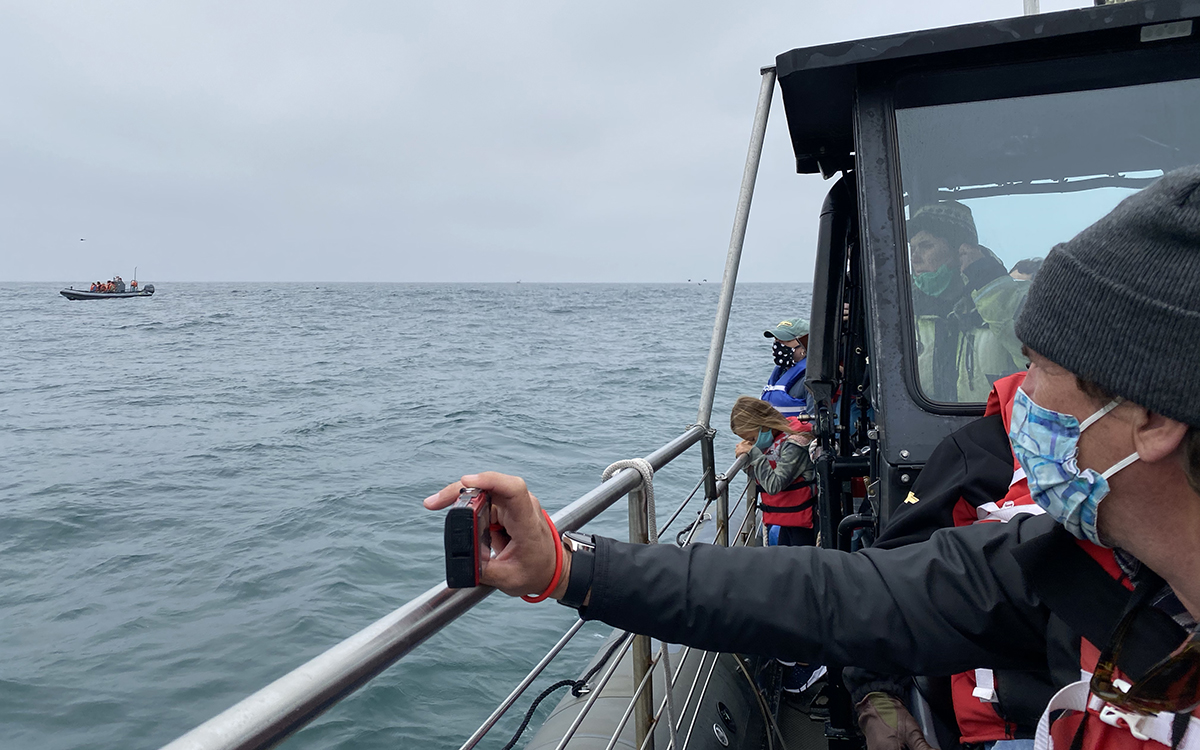
Photo by Britany Robinson
A special group of whales
Each year, gray whales embark on the longest migration of any mammal, traveling roughly 6,000 miles from their feeding grounds in the Arctic Sea to their breeding and birthing lagoons in Baja, California, and then back for a 10,000-to-12,000-mile round-trip. It’s a strenuous journey, especially on the northbound route, when it’s been much longer since the whales last gorged on amphipod crustaceans off the coast of Alaska. But a unique group of about 230 gray whales takes a more leisurely route; instead of traveling all the way north, the summer resident gray whales, the aforementioned Pacific Coast Feeding Group, linger off the coasts of California, Oregon, Washington, and British Columbia.
Newell began studying the whales off Depoe Bay in 1992, and eventually she started looking into what drew so many of them to spend weeks or even months in a spot devoid of their primary food source. On any given day during the season, coastal Oregonians can glimpse up to 20 whales swimming within a quarter mile of where Newell docks her whale-watching tour boats. By analyzing their fecal matter, Newell discovered these summer residents were feeding on mysid, which are plentiful in Depoe Bay’s kelp beds.
Those who oppose the Makah’s whaling waiver argue that these summer residents would be especially vulnerable to hunts, due to their site fidelity and tendency to swim right up to boats, like Comet did on our tour.
After experiencing Newell’s whale watch, I spoke to Greene, who recalled the first time he saw a whale, when he was just three years old. His father, a fisherman, had brought him out on the water, where he witnessed the sigh of a blow and then a whale's back breaking the surface before disappearing back into the water.
“I couldn’t look away from the water for the rest of the day,” said Greene, who added that Makah members have been studying these whales for many years. “Our hunt proposals are designed to limit the chances of a PCFG whale being harvested.” He says the Makah know the migration patterns well and that the timing of hunts will minimize the risk of killing a whale from this smaller group.
Greene adds that tribe members undertake years’ worth of training and teachings before they can participate in a gray whale hunt. When I asked for more specifics, Greene said the whale is so deeply ingrained in Makah spirituality and culture that it’s difficult to communicate the significance to outsiders. “There are things we believe—[these beliefs] were gifted to us to experience amongst ourselves.” He paused. “It’s not something you can express through an interview.”
The eastern Pacific gray whale population has bounced back considerably from where it was in the 1940s (thanks to the enactment of international conservation measures), when they numbered just a few hundred. But they certainly don't live without challenges—warming temperatures and diminishing Arctic Sea ice because of climate change are making the amphipods they feed on scarcer. And, in 2019, the NOAA declared an “Unusual Mortality Event” when 191 gray whales were found dead along the coast between January and the time of the November hearings. Since only 4 to 13 percent of deceased gray whales end up washed ashore, an estimated 1,400 and 4,800 whales died that year.
Gray whales are an indicator species, in that the health of their population is considered reflective of overall ocean health. As the whales have delayed their southbound migration and expanded their feeding range northward to Arctic waters—even remaining in polar waters over winter—scientists have gleaned new information about how changes in sea ice coverage alter prey distribution, and thus whales’ foraging and reproductive behavior. The gray whales also serve as sentinels of ecosystem change in terms of how changing water temperatures and currents could impact the timing of environmental cues that are important for navigation and migration. The returning summer resident whales (the PCFG) offer excellent opportunities for Newell and fellow researchers, who study the same whales closely year after year, to keep tabs on how the ocean and individual members of this population are faring.
For example, Scarback—a female who survived being shot by an exploding harpoon in the mid-1980s—has been frequenting Depoe Bay for more than two decades, and Newell sees her almost every summer; she’s had three calves in that time. Scarback and fellow mother whales, Newell says, bring their calves here each year and pass knowledge of this unique feeding ground down through generations.
Newell says the calves are also taught to trust humans. Should the Makah resume hunting, she says, these summer residents would be particularly vulnerable because they’re so comfortable with people and boats.
“Their trusting behavior will be compromised,” she told Sierra. “They’ll be like sitting ducks, and they’ll get killed.”
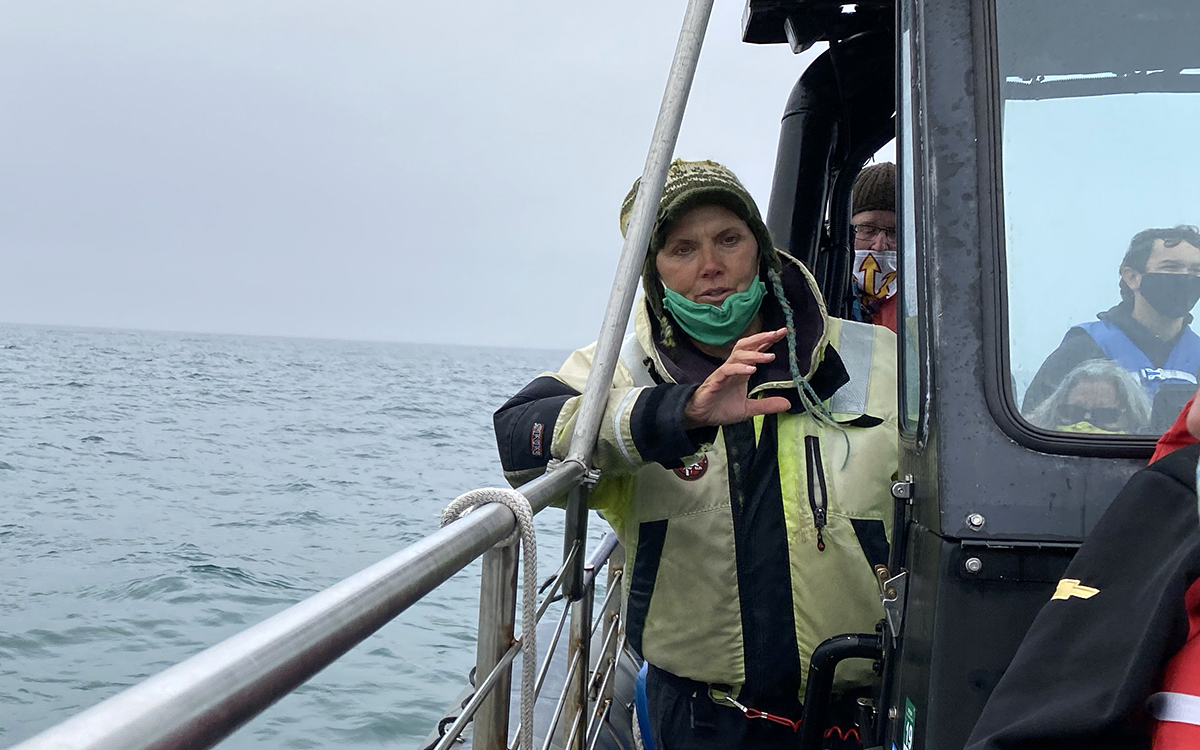
Photo by Britany Robinson
An ancient, spiritual connection
Christopher Martinez was two years old the last time the Makah Tribe killed a gray whale. He doesn’t remember much from that day, but he remembers growing up with a distinct awareness of not having had the opportunity to participate in this cultural tradition. “It’s kind of like a piece is missing,” he told Sierra.
Today, Martinez is 29, a father, and one of only eight Makah language instructors teaching students in kindergarten through eighth grade. “None of us are fluent,” he says. So it’s important to Martinez to preserve what they have left of their traditional language—and whaling, he believes, is a big part of cultural preservation. “There are things in whaling you can only say in Makah—they don’t translate to English. It’s an important stepping stone to keeping our language alive.”
Despite the absence of whaling practices for most of his life, Martinez remembers learning as a child about the significance of the hunt—the years spent training, the intensity of preparation, and the respect bestowed upon the whale when it is killed. He hopes that experiencing all that he learned about growing up, and seeing his own kids and students granted the opportunity to do so as well, will bring the community together. “It gets us a step closer to how we used to be.”
In a written declaration to the administrative law judge overseeing the hearing, Patrick DePoe, an elected member of the Makah Tribal Council, points out that for many Makah members, that opportunity is already lost. “In that time [since the last hunt], many elders in our community have died without the opportunity to eat whale meat, blubber, and oil or to engage in the ceremonies, songs, dances, and other cultural practices that are integral to whaling and the use of whale products.”
In 2020, members of the Makah Tribe were able to experience elements of a traditional whale hunt when a whale died after getting tangled in fishing lines. Greene says that often when such entanglements occur, the tribe is able to cut the lines and save the whales. This one didn’t make it, so Makah fishermen towed it ashore, where the whale meat was distributed among families, and other elements were used in ceremonies and artwork. But this occurrence represents only a small fraction of what goes into a traditional hunt, and what is gained by the tribe.
To determine the viability of a given hunt, the Makah pair their ancestral knowledge with scientific studies. Taking into consideration the current number of gray whales, they’ve concluded that the roughly four they propose to kill per year would have a negligible effect on the health of the population—and Greene says this has been determined alongside a marine biologist working with the tribe.
Accordingly, the 2015 Draft Environmental Impact Statement concludes, “None of the action alternatives are likely to increase the risk of adverse impacts on the ENP gray whale stock.” But when it comes to the Pacific Coast Feeding Group, the report reads, “All action alternatives are likely to increase the risk of adverse impacts on PCFG gray whales.” That risk varies across the five proposed “alternatives,” which detail the timing of the hunting window and allotted whales struck and killed.
Still, Greene argues, the Makah’s deep ancestral connection to the gray whale provides them with the knowledge that is vital to a healthy ocean and a healthy whale population.
“Our connection to our land and our resources, it’s the most sacred thing that we have—it gives us a different level of understanding of what is out there.” Greene points out that the voluntary halting of whale hunts in the 1920s made for a very scary time for the Makah Nation. But they understood the urgency of the situation. “We stopped whaling before the rest of the world saw there was a problem.”
The wait continues
On December 20, 2020, following extensive hearings and comment periods to consider the waiver for the Makah Nation to resume limited hunting, the US Court of Appeals for the Ninth Circuit reversed its previous decision, ruling that the government had failed to comply with the National Environmental Policy Act. Attorneys for the Makah have stated that this decision is a major setback for treaty rights, and that they may appeal the decision to the US Supreme Court, a process that will likely take a few years.
Greene says patience is important. “We’ve been here for thousands of years, and we want to be here for thousands more. As long as we’re working with a good heart, approaching things from an informed manner, and staying true to our values and teachings, we’re going to get to where we need to be when the time is right.”
One thing is clear to me—both the Makah Tribe members and those who oppose whaling ultimately want what is best for the whales and the ocean. The Makah also want what is best for their people, who agreed to cede 300,000 acres of tribal land to the US government on the condition that they could continue hunting whales in their traditional ocean waters. Whether you look at it from a scientific or cultural perspective, it’s all connected: the ocean, the whales, the people who respect and care for both, as well as the negative impacts humans continuously have on the natural environment.
“Life is something that’s very sacred,” says Greene. “Whether it’s a plant, an animal, a human, a life is a life is a life.”
 The Magazine of The Sierra Club
The Magazine of The Sierra Club


